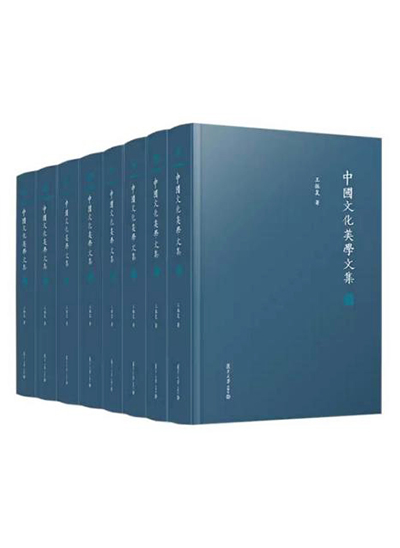An exploration into China’s cultural aesthetics

A Collection of Chinese Cultural Aesthetics
Wang Zhenfu, a professor from the Department of Chinese Language and Literature at Fudan University, advocated for the “academic school” of Chinese aesthetics to intensify theoretical aesthetic research. He believes that a “history-first” approach, focusing on the meticulous study of exemplary texts, is crucial for understanding the core components of Chinese aesthetics. Aiming to construct “localized” Chinese cultural aesthetics, Wang has persistently adhered to this academic philosophy for the past five decades, dedicated to establishing an academic and discourse systems of Chinese cultural aesthetics. His scholarly thoughts and achievements are prominently showcased in the recently published eight-volume A Collection of Chinese Cultural Aesthetics.
Wang’s logical starting point in aesthetic research stems from his cultural anthropological valuation of the history of aesthetics. He conducts a systematic theoretical exposition of the aesthetic value and significance of “theurgy,” “theurgical culture,” and “theurgical natures.” He defines the cultural aesthetic implication of theurgy as the duality of cultural anthropology featuring aesthetics and worship, endows theurgy with the value of life aesthetics, and interprets the originality of Chinese aesthetics from the genetic composition of cultural aesthetics.
From the perspective of Wang’s “localized” construction of Chinese cultural aesthetics, the aesthetic research of Zhouyi [Book of Changes] constitutes a core component. This work focuses on aesthetic thinking and cultural aesthetic decoding of Zhouyi on the basis of primitive theurgical aesthetics. Interpreting the aesthetic wisdom of Zhouyi can be considered exceptionally challenging. However, Wang manages to surmount various obstacles by starting with textual research on divination and philosophical argumentation, interpreting the lines, hexagrams, and image-numerology of Zhouyi as aesthetic codes. Holding the understanding that “Yi-ology was originally theurgical culture,” the author develops a systematic view upon “divination and philosophical argumentation of the classic, as well as their connections,” revealing the “transformation mechanism from theurgical to poetic wisdom.” He argues that qi [universal energy] is the basic element that constitutes the life aesthetics of Zhouyi, and the evolution of image-numerology is the representational origin of symbol aesthetics, striving to construct the discourse system for the aesthetic wisdom in Zhouyi.
Architectural aesthetics represents a category of aesthetic content that narrates reality and the objects of life, which differ from the textological nature of sorcery aesthetic sourcing, the decoding of the philosophical connotations within Zhouyi, and the contextual compilation of aesthetic history. It proceeds from the beauty inherent in architectural objects and probes the cultural essence of architectural beauty, carrying out an “independent” textological analysis of the cultural generation mechanism, imaging, function, and significance of architectural beauty.
Zhao Jianjun is a professor from the School of Humanities at Jiangnan University.
Edited by YANG LANLAN
